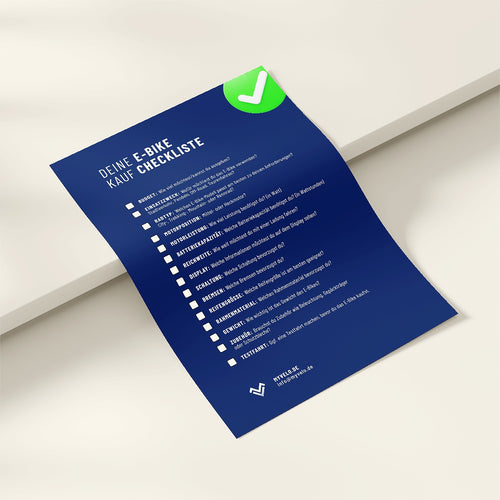A nipple wrench is a tool that is specifically designed to adjust spoke nipples on bicycles. The spoke nipples sit at the end of the spokes and connect them to the rim. With a nipple wrench you can change the tension of the spokes, which is necessary to center the wheel and keep it stable.
If the spokes are too loose, the wheel can become unstable, which can lead to vibration or even spoke breakage. If they are too tight, the rim can become distorted. The nipple wrench grips the spoke nipple so you can turn it to precisely adjust the spoke tension.
Using nipple wrenches correctly
Using a nipple wrench correctly takes a bit of practice, but with the right technique you can center your wheel yourself and adjust the spoke tension to the optimum level. Here are step-by-step instructions on how to do it:
1. Preparation
-
Jack up your bike : Make sure the bike is secured in a work stand or the wheel is removed. This will allow you to easily rotate the wheel while working on the spokes.
-
Release the rim brake : If you have a rim brake, release it so that you can rotate the wheel freely.
-
Check the wheel for imbalance : Rotate the wheel slowly and listen for lateral or vertical movements (figure eights or runout). Mark the places where the wheel is wobbling, e.g. with a piece of adhesive tape.
2. Choose the right nipple clamp
There are different sizes of nipple wrenches. Choose one that fits snugly over the nipples of your spokes to avoid slipping or damage.
3. Check spoke tension
Check the tension of the spokes by squeezing them lightly. All spokes should have a similar tension. Be careful not to put too much tension on a single spoke as this can warp the rim.
4. Make adjustments
-
Direction of rotation : If you turn the nipple wrench clockwise, the spoke will be tightened, which will pull the rim in the direction of the spoke. If you turn it anti-clockwise, the tension will be loosened.
-
Small steps : Work in small steps by turning the nipple by only a quarter or half a turn. Then test again and again by turning the wheel to see if the correction is sufficient.
5. Correct lateral runout
- If the rim wobbles in one direction (sideways runout), you need to tighten the spokes on the opposite side of the imbalance and loosen the tension on the wobbling side. This will reduce the sideways runout.
6. Correct vertical runout
- If you have a vertical runout (rim runs up and down unevenly), you need to tighten the spokes closest to the high spot and loosen them on the opposite side.
7. Keep spoke tension even
While you are truing the wheel, you should always keep an eye on the spoke tension to ensure it remains even. Too great a difference in tension can make the wheel unstable in the long term.
8. Test the wheel again
After making the correction, you should turn the wheel again and check whether it now rotates smoothly. If necessary, repeat the process on the affected areas.
9. Final Control
Once the wheel is properly centered, check all spokes again for even tension. A well-centered wheel will last longer and evenly distribute the load on the rim.
Tips & Tricks with the Nipple Spanner
It is best to use a truing stand to adjust the wheels even more precisely. This gives you precise reference points to better identify lateral and radial runout. Caution: Never turn the spokes too hard. Too much tension can cause the rim to break or be damaged.





